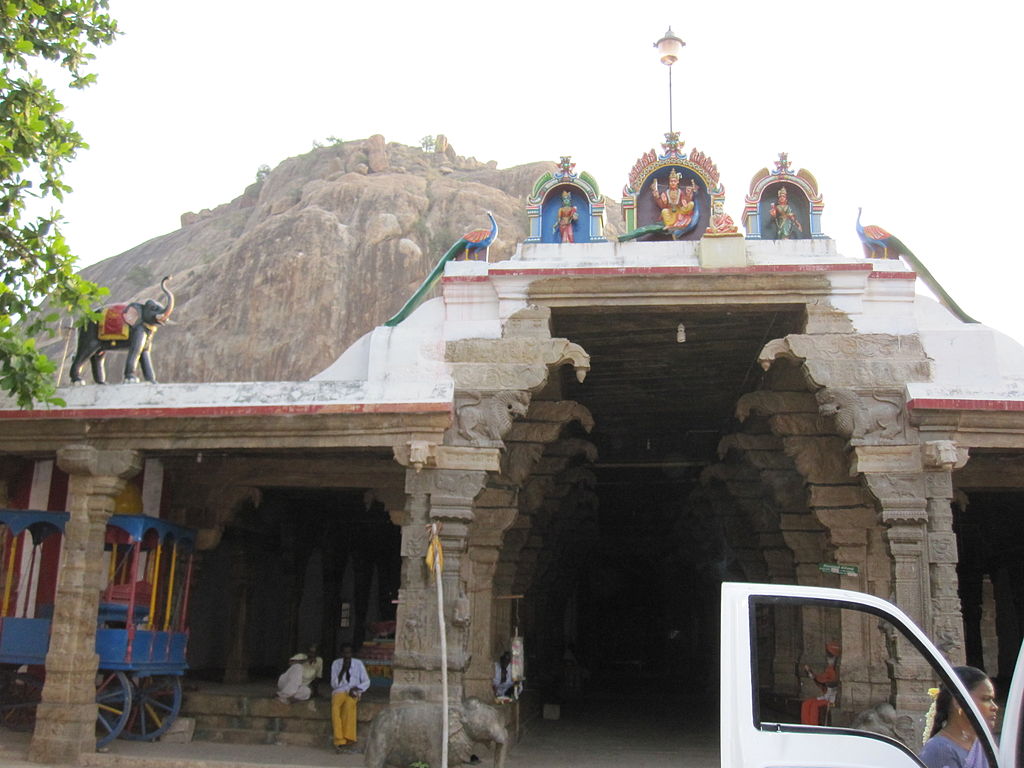Kalugumalai Jain beds in Kalugumalai, a panchayat town in Thoothukudi district in the South Indian state of Tamil Nadu, are dedicated to the Jain and Hindu religious figures. Constructed in rock-cut architecture, the unfinished temple is believed to have been built during the reign of Pandyan king Parantaka Nedunjadaiya. The rock-cut architecture exemplary of early Pandyan art. The other portions of Kalugumalai house the 8th century unfinished Shiva temple, Vettuvan Koil and Kalugasalamoorthy Temple, a Murugan temple at the foothills.
Shrine’s History
The temple is believed to have been built during 8th century around 800 AD during the reign of Pandya king Parantaka Nedunjadaiya. Historians believe that the rock cut carvings and the caves are indicative of dwelling of Digambara sect of Jainism in the region. During modern times, some of the Digambaras attempted replacing the idol of Murugan in the lower cave temple with that of Mahavira.The inscriptions in the bed indicate the position of Jain religious women in the society compared to their male counterparts. There are women higher in the monastic order and they travelled to a lot of places. There are twenty-one religious places mentioned where these women travelled, out of which eleven have been deciphered – one being Kalugumalai itself, five in Ramanathapuram district, one in Tirupanthuruthi in Kanchipuram district, four in Tirucheranm in Kanyakumari district. Some historians believe that Jains promoted education during the early Pandyan Empire. It is understood from the inscriptions that the Pandyan rulers developed an education centre like a Jain University near Kanyakumari exclusively for women. This led to the conclusion that Jainism had more influence on the people in the region than Buddhism. As per the inscriptions, there were around 8,000 Jains living in the regions around Madurai. Ambika The hill was under the control of Ettaiyapuram Zamindar until 1954. The Raja gifted the village to the Kalugasalamoorthy Temple and formed five streets around the temple to enable the temple car to pass easily. He also allocated a middle street for the temple priests. During the Panguni Uthiram festival procession, the elongated conflict between two castes in the region, namely, Nadars and Maravars resulted in riots, popularly called Kalugumalai riots of 1895. A total of ten people were killed, many injured and the temple car and other property in the region were destroyed. The sculptures in Kalugumalai Jain beds and the Jain abode were not affected during the riots

Architectural Relevance of This Shrine
The temple is located in Kalugumalai, a rocky hill in Thoothukudi district in southern Tamil Nadu. The sculptures and the carvings are indicative of Pandyan art during the period. The granite rock looks like a blooming lotus, with hills surrounding it on three sides.There are approximately 150 niches in the bed, that includes images of Gomateshwara, Parshvanatha and other Tirthankaras of the Jainism
Shrine’s Map Location and How to Go There
By Road
The nearest Bus stop is Kalugumalai
By Rail
The nearest Railway station is Kovilpatti
By Air
The nearest Airport is Tuticorin Airport.






































